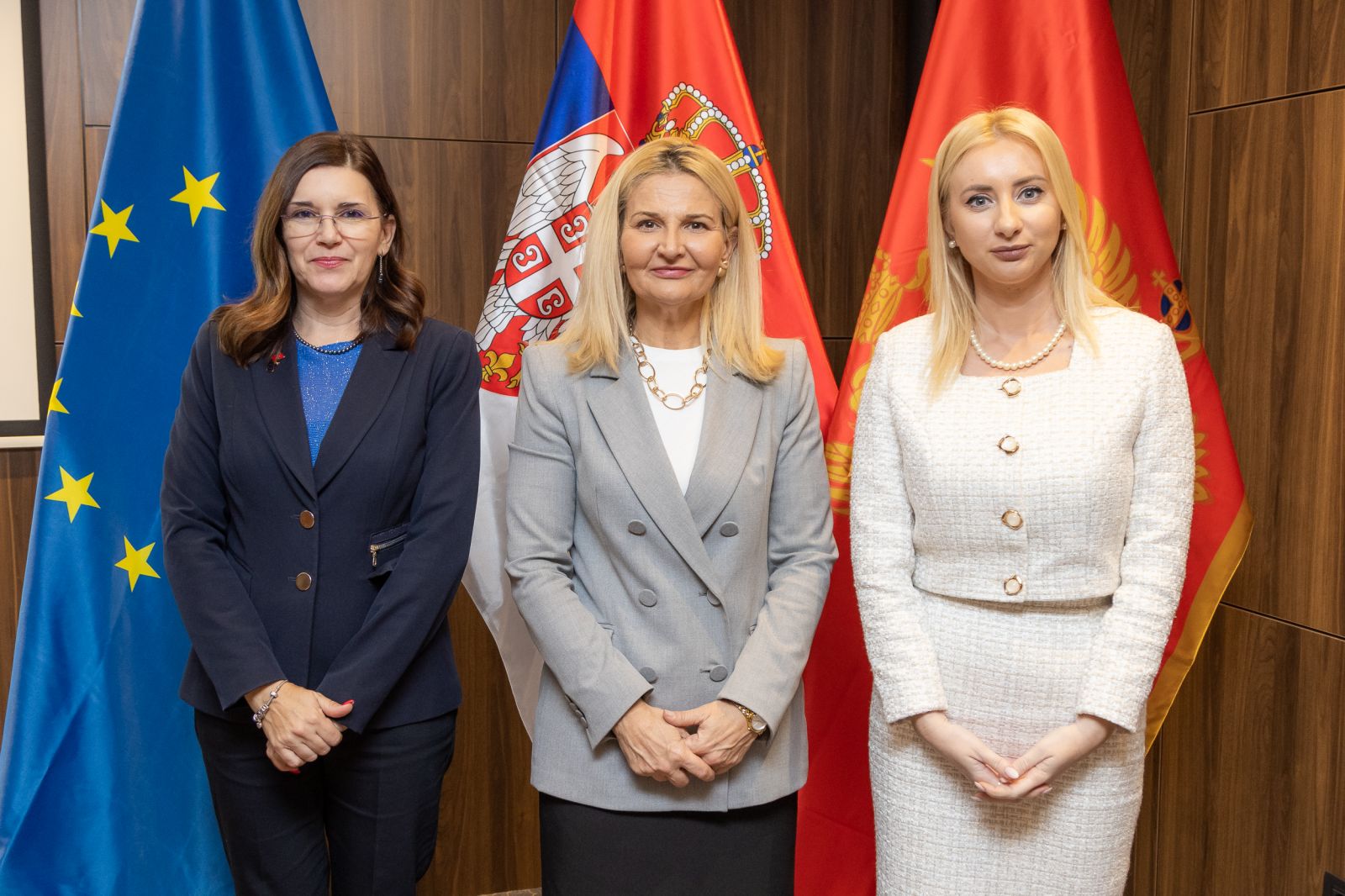
Montenegro and Serbia have been successfully cooperating for 15 years within the cross-border cooperation programme with the support of the European Union, and this cooperation will continue in the future through the IPA III programme framework, is the message from the Final Conference of the IPA II Cross-Border Cooperation Program Serbia–Montenegro 2014–2020, which was held today in Podgorica.
At the conference, the results of projects implemented during the financial perspective of IPA II with the aim of improving the quality of life of citizens living in 14 northern municipalities in Montenegro and 3 districts in western Serbia were promoted.
“During the financial cycle that covered the period from 2014 to 2020, 28 projects with a total value of over EUR 7.7 million were contracted, of which the EU’s contribution is 6.4 million. Since the beginning of cross-border cooperation in 2008, more than EUR 15 million has been allocated for projects implemented by institutions and organisations from the two countries,” said Maida Gorčević, Minister of European Affairs of Montenegro.
She pointed out that the cross-border cooperation programme between Serbia and Montenegro contributed to the development of the programming area by encouraging cooperation, exchange of experiences and use of potential in order to make this region attractive for life and work.
“The success of this and other cross-border and interregional cooperation programmes in which the Republic of Serbia and Montenegro participate, as well as the use of European funds in general, are the best evidence of a common commitment to EU integration, with a special focus on economic integration and the needs of citizens, i.e. their standard of living,” said Gorčević.
Minister of European Integration of the Republic of Serbia Tanja Miščević reminded that the cross-border area had many benefits for not-so-large funds, while the beneficiaries of the projects were diverse, such as local self-governments, non-governmental organisations, new businesses, startups and sensitive groups.
She referred to successful projects implemented through this cross-border cooperation programme in the area of waste management, improvement of tourism potential, development of crafts, procurement of equipment for protection and rescue, improvement of health care and a special focus on projects involving young people in the cross-border area.
“By signing a new financial agreement and working on the promotion of new calls in the IPA III financial perspective, through two thematic priorities, we will have EUR 8.4 million at our disposal. Our task is to animate both new and old users to use as many resources as possible. This is proof of serious and good cooperation between Montenegro and Serbia, which will only improve through projects like this,” said Miščević.
Ambassador of the European Union in Montenegro Oana Christina Popa said that the European Union was proud to have supported these projects because they had significantly improved the lives of people living in the areas covered by the programme.
“The EU, Montenegro and Serbia recently signed a new agreement, which provides a total of EUR 8.4 million for the next few years. The new cross-border programme continues to foster cooperation in the field of cultural heritage, health and social services and employment opportunities,” said Popa.
She emphasised that cross-border cooperation was the ideological backbone of a united Europe and a powerful instrument for building prosperity across the continent.
“European Union cross-border cooperation programmes build stronger ties between neighbouring countries and prove how powerful cooperation can be in solving common challenges. As such, they clearly illustrate the EU’s commitment to a united, prosperous and peaceful Europe,” Popa concluded.
Some of the most successful projects implemented within this programme were presented at the conference. Institutions and organisations from the programming area conducted joint activities in the fields of culture, health, economic cooperation, social inclusion, employment, environmental protection and encouraging adaptation to climate change, as well as the development of tourism potential through the valorisation of natural and cultural heritage.
The IPA II Cross-Border Cooperation Programme Serbia–Montenegro 2014–2020 is being implemented on the territory of 14 municipalities in Montenegro – Andrijevica, Berane, Bijelo Polje, Gusinje, Kolašin, Mojkovac, Nikšić, Petnjica, Plav, Pljevlja, Plužine, Rožaje, Šavnik and Žabljak, as well as on the territory of Raška, Zlatibor and Moravica districts in Serbia.














